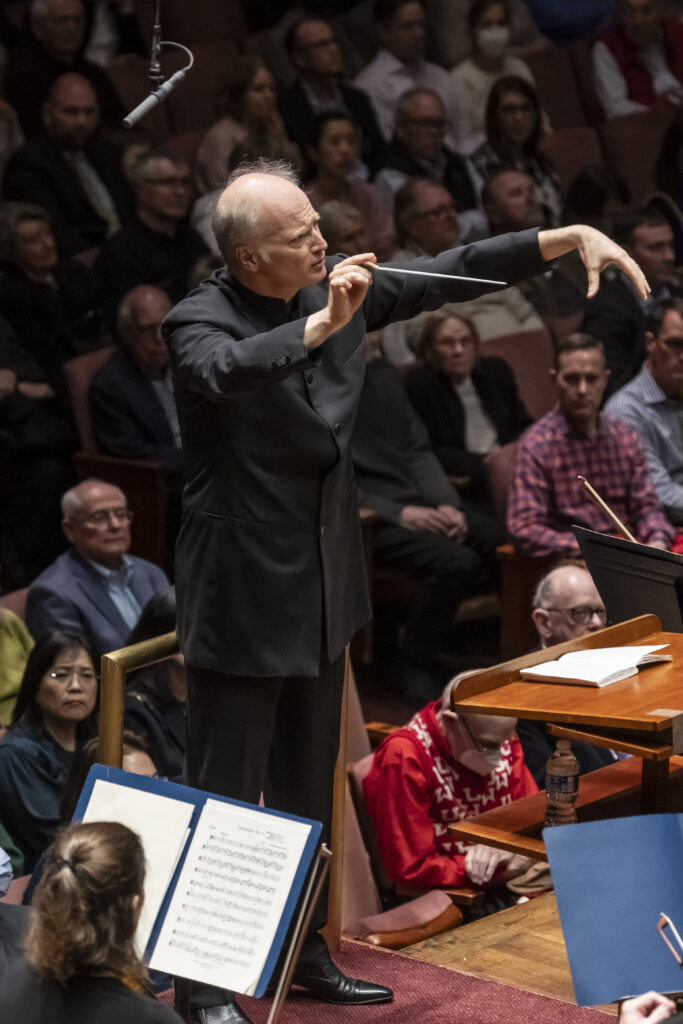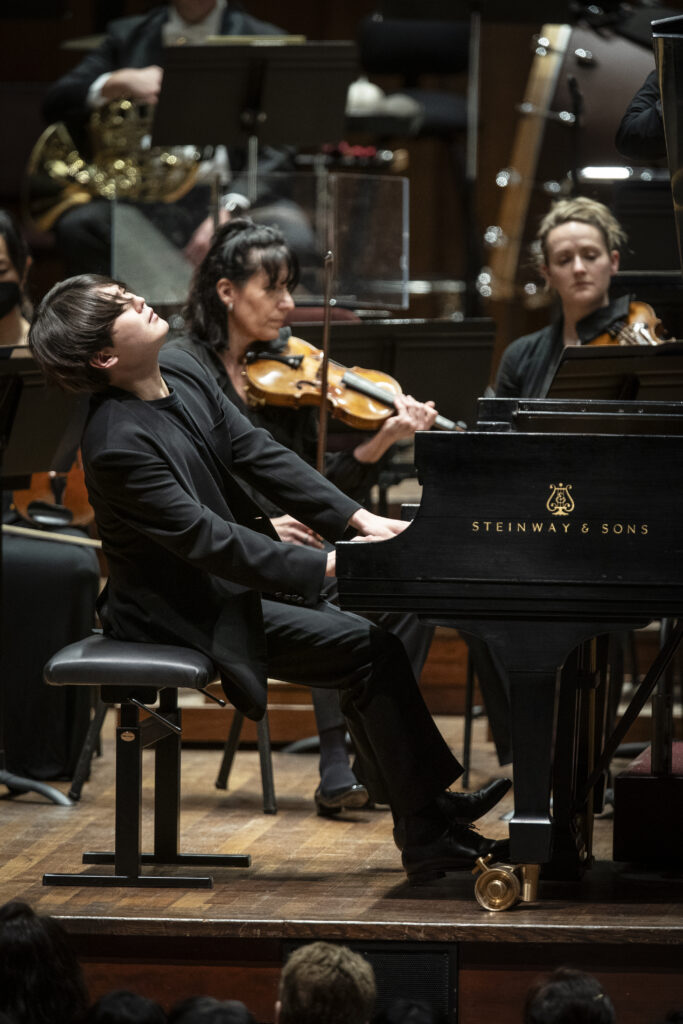Noseda, NSO prep for European tour with richly varied program

Gianandrea Noseda conducted the National Symphony Orchestra Thursday night at the Kennedy Center. Photo: Scott Suchman
The National Symphony Orchestra will embark on its first international trip under music director Gianandrea Noseda next month. The nine-city European tour, scheduled from February 16 to 28, will feature two star soloists in alternation, pianist Seong-Jin Cho and violinist Hilary Hahn.
Noseda led the NSO Thursday night in the second of three “dress rehearsal” programs, giving the hometown crowd in the Kennedy Center Concert Hall an early listen. (From last week’s concerts, only Schubert’s Ninth Symphony will feature on the tour.)
This week’s program of music by Carlos Simon, Beethoven, and Shostakovich is precisely the one that Noseda will lead at the climax of the tour, the February 26 concert at the Teatro alla Scala in Noseda’s native Milan. As Noseda mentioned in a touching pre-concert tribute, the combination spotlights the NSO’s strengths, honed by his three predecessors, Leonard Slatkin, Christoph Eschenbach, and Mstislav Rostropovich.
America’s national symphony should put American music on display. The NSO co-commissioned the concert opener, a substantial concerto for orchestra by Washington native Carlos Simon called Wake Up! Premiered last year by the San Diego Symphony Orchestra, for the opening of its new hall, the piece invites the auditorium, the orchestra, and the audience to awaken “from the pandemic of sleep,” a theme drawn from a poem (“Awake, Asleep”) by Nepali writer Rajendra Bhandari.
The new hall in San Diego is a former movie theater, and Simon wades into the piece with tributes to film music composers, like Erich Wolfgang Korngold, whose sweeping Violin Concerto will also be heard on the European tour. Sleepy sections, with misty woodwind solos, slumbering strings, and dream-like bar chimes, alternated with agitated louder music, marked by the repetition of an insistent two-note motif, which Simon has identified with the commanding words of the title. Traditional metallic instruments ring throughout the piece, augmented by clangorous metal pipes, an idea suggested, Simon has noted, by a visit to the construction site of the new hall.
Different sections of the orchestra took center stage, most dramatically in a passage for the battery, with groaning glissandi from the timpani. An intimate serenade for the quartet of string principals appeared between soft woodwinds complemented by muted trumpet stings and an imperial fanfare for the brass section. The piece had not quite enough ideas to justify its length of twenty minutes, but the longueurs were forgotten quickly.

Seong-Jin Cho performed Beethoven’s Piano Concerto No. 4 with the NSO Thursday night. Photo: Scott Suchman
Seong-Jin Cho returned to the Kennedy Center, turning out the same capacity audience that came to hear him last year. The South Korean pianist played an immaculate interpretation of Beethoven’s Piano Concerto No. 4, which was thoughtful and polished from the serene opening of the first movement. With remarkably detailed fingerwork, even at a relatively fast tempo, Cho took time in the development section and the standard cadenza penned by Beethoven to create some mysterious and delicate effects.
The second movement featured the contrast of the strings in an angry, buzzing unison with the soothing solo piano’s music, soft as an interior monologue. In the Finale, Cho’s urging toward an even faster Vivace pacing yielded thrilling results, finely tooled from both soloist and the expertly accompanying Noseda, guiding an assured performance by the NSO. Responding to generous ovations, Cho offered a delicate encore to cool the audience down for intermission, Liszt’s Consolation No. 3, heard as if through a gauzy veil.
Shostakovich’s Fifth Symphony provided a white-knuckle thrill at the end of this meaty program. After the American optimism of Simon and the sheer beauty of Beethoven, this symphony was a dark reminder of the power of an autocratic state to exert control even over its artists. After Shostakovich fell into disfavor due to Joseph Stalin’s distaste for his opera Lady Macbeth of Mtsensk, the composer was forced to withdraw his Fourth Symphony before its premiere and instead knuckle under with the authority-pleasing Fifth.
The first movement seethed with mournful anger in its accented opening, with floating sound from the violins and then the violas on a softer second theme. The entrance of the piano and horns, full of menace, ramped up the action, answered by the martial call of the trumpets and violent percussion. The influence of Gustav Mahler came across most strongly in the neurotic second movement, given a folksy ease by Noseda’s choice of tempo and some braying solos on E-flat clarinet. The trio section, with pokey violin and flute solos, danced with sly grace.
The elegiac slow movement featured a tender opening led by the second violin section. Mournful solos from oboe and especially flute marked the quiet moments before the movement grew to howls of desperation and then subsided. Noseda’s only misstep was to push the accelerando pacing of the finale almost to its breaking point. The piece can have a greater effect by being a little more deliberate, especially as Shostakovich, after flirting with tragic sounds throughout the movement, ended the piece solidly in triumphal major.
The program will be repeated 8 p.m. Friday and Saturday. kennedy-center.org

Posted Jan 26, 2024 at 3:45 pm by Michel
If anything your review understates the extraordinary performance of the Shostakovich: the orchestra and conductor absolutely on top of their game – will take La Scala by storm!!!